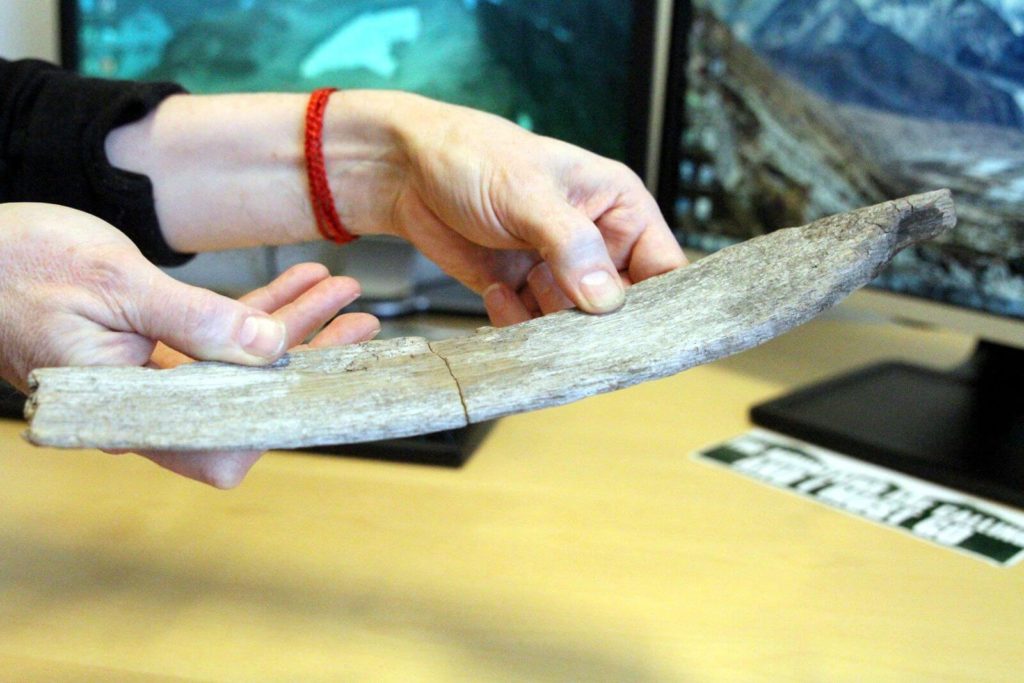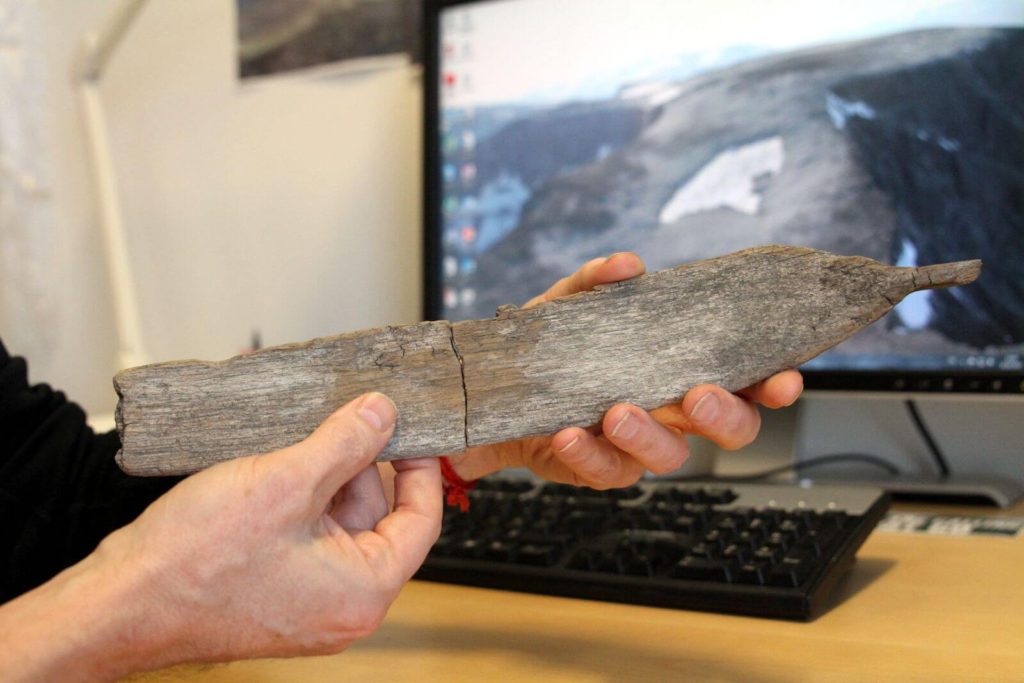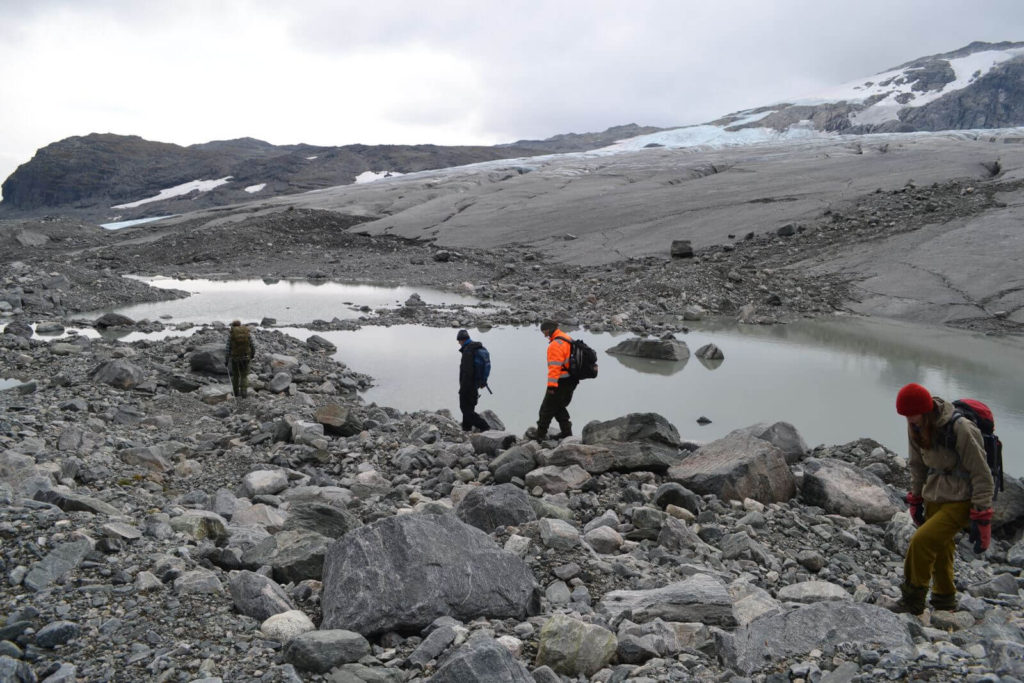Finds from the ice are sometimes handed in to us, even though they are found outside our county jurisdiction. This is a direct consequence of the national media attention that our work in Oppland gets. When we receive the finds, we make sure that we note all the relevant information, such as GPS-coordinates and a description of the find spot. We then forward the find to colleagues in the county, where the find was made.

This time we received part of an old ski, found by a mountain walker at the edge of the Hardangerjøkulen glacier. It is the front part of a ski, broken into two adjoining fragments. The find was made c. 30 years ago. Only recently did the finder realize that the ski could be of archaeological significance, when he read about finds from the ice in the media.

The most secure way of dating skis, outside radiocarbon, is to look at the binding area. This is not possible here, as we only have the front part of the ski. However, based on the narrow width of the ski, it appears likely that the ski is perhaps not more than two or three centuries old at the most.
Another clue to the age of the ski is the find spot. Hardangerjøkulen is a glacier – the 6th largest in mainland Norway (excluding Svalbard). In general, archaeological finds and glaciers are not a good combination. The ice in a glacier moves and crushes the artefacts before the fragmented remains are dumped in front of the glacier. You can read more about glaciers and ice patches as archaeological find spots here.
However, even though Hardangerjøkulen is a glacier, small patches of non-moving ice can sometimes be attached to such glaciers. To check out whether this is the case here, we need ground intelligence. Luckily, it turns out that we have such information.
We got in touch with our colleagues in Hordaland County, where Hardangerjøkulen is situated. The ski is now on its way there. It turns out that our colleagues had already undertaken a survey in the find area of the ski in 2013. Archaeologist Øystein Skår has kindly provided us with a photo of the area. This clearly shows that this is glacier land, not an ice patch, which does back-up our hypothesis that the ski is at most a few centuries old. However, only radiocarbon can give a final answer.

The melting ice in Hordaland has previously yielded interesting finds. A pair of well preserved medieval skis and c. 1400-years-old sled remains have been recovered from the Vosseskavlen ice patch, a little more than 20 km from Hardangerjøkulen. A paper on the sled can be found here.
Coincidentally, there was a news story on the Hardangerjøkulen glaciers just a few days ago. The glacier has experienced a lot of melting in the 20th century. The melting has sped up in the last 15 years. This melt, seen in combination with the current climate prognosis, makes the future of the glacier look bleak. Most likely it will be gone by the end of this century, if not before. This is hard to fathom. The ice probably contains more artefacts, which will melt out and hopefully be rescued. But the dark background of climate change makes it is difficult to feel excited about the prospect of more archaeological finds from this iconic glacier.
